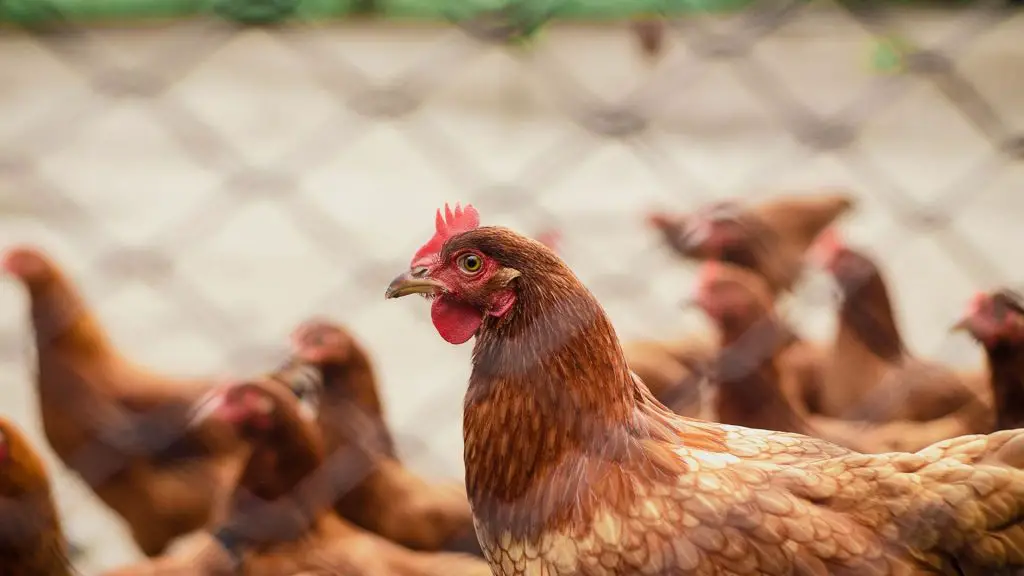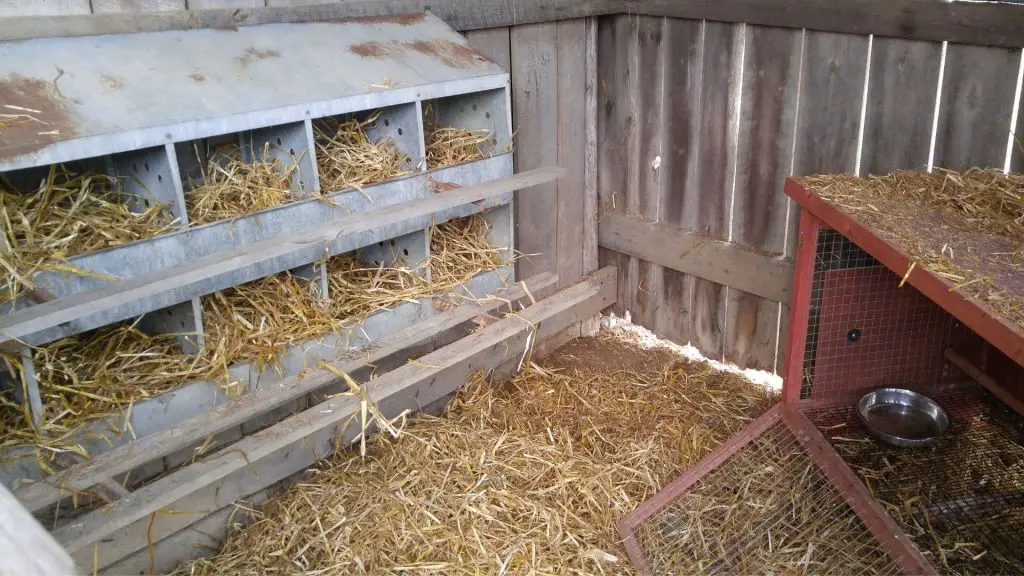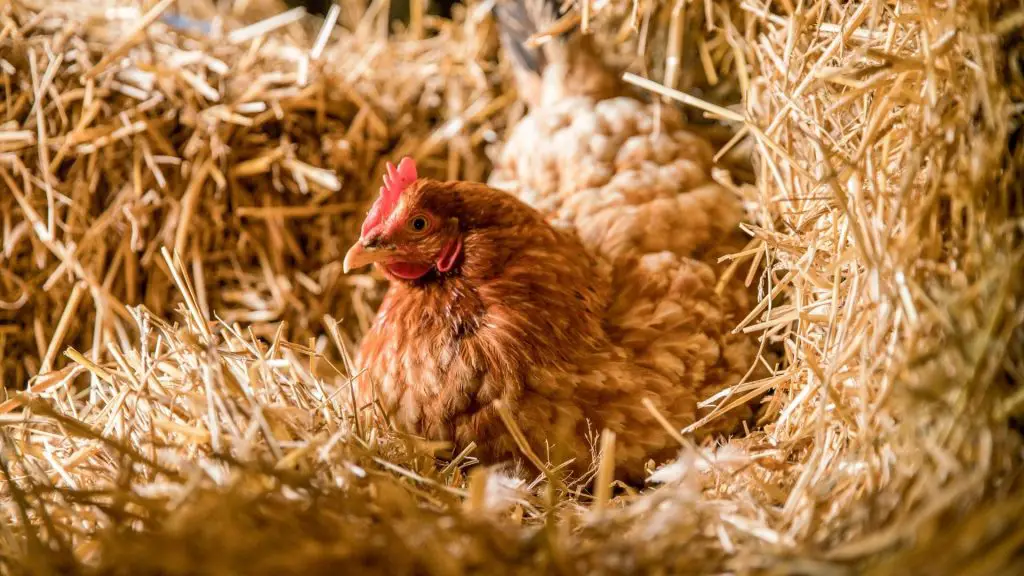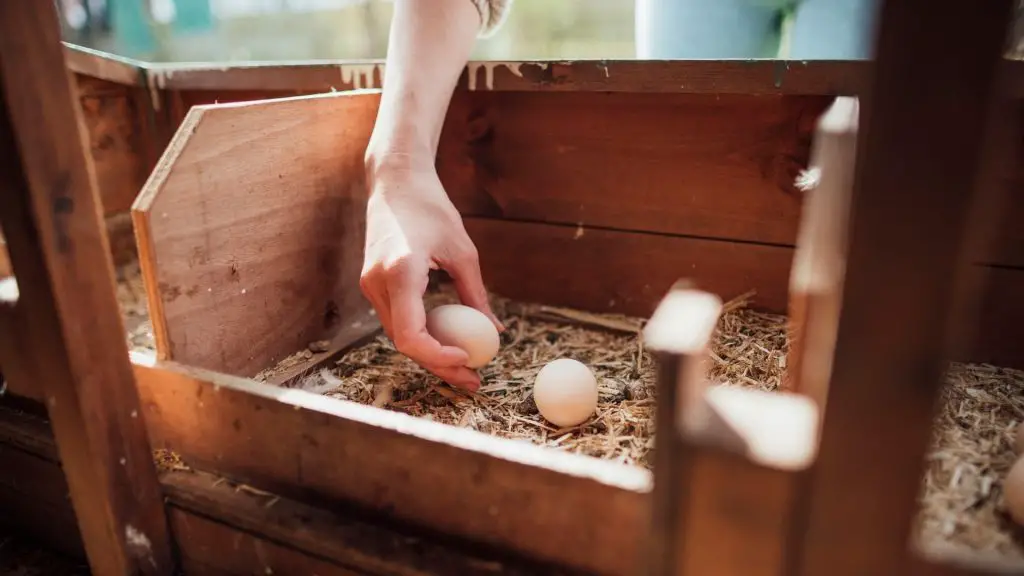Having fresh eggs right in your backyard is fantastic, but if you want to encourage your hens to keep laying, they need nesting boxes. If you give your chickens the right amount of nesting boxes, they’ll lay more eggs, so you should ensure that you have the correct hen-to-nest ratio.
How many nesting boxes per chicken? You should provide one nesting box for every four or five egg-laying chickens that you have in your coop. So, if you have eight chickens that lay eggs, you’d need at least two nesting boxes.
Providing your chickens with a suitable amount of nesting boxes is crucial if you want to get as many eggs as you can. This article will tell you how to best set up your nesting boxes for your coop.
Does Each Chicken Need Their Own Nesting Box?

If you have plenty of hens laying eggs in your coop, you may think that each hen needs a nesting box. However, hens can share boxes, and most of the time, they prefer to lay their eggs where other hens have laid theirs.
Each chicken doesn’t need their own nesting box. Four or five laying hens can share one box. Chickens are social animals, and they like to stick close together because there’s a sense of safety in numbers.
Having more hens in one box helps every chicken in your coop protect its eggs from predators like raccoons, rats, and cats.
Hens also choose to use the same nesting boxes as other chickens because they raise their chicks together. When a hen has a chick, the whole flock takes care of it, sharing the chick-rearing responsibilities.
So, many hens will intentionally lay their eggs where other chickens have already laid. Sometimes, they’ll even wait in line to use one nesting box, even if there are many hens in your flock.
However, if you have more than five laying hens, two of them may have to lay simultaneously, making it crucial for you to have plenty of space for them to provide you with eggs.
Think of it a bit like a bathroom. If you have many people in your household, you may want more than one bathroom to keep wait times low. Chickens are the same with their nesting boxes, so always ensure that there’s one nesting box for every four or five chickens.
How to Get Chickens to Use Nesting Box?

Sometimes, it can be challenging to ensure that your hens lay their eggs in the nesting boxes. However, once they understand what the nesting boxes are for, you shouldn’t have any issues in the future.
To get your chickens to use nesting boxes, follow the steps below. Your hens should have no trouble understanding that the nesting box is for laying eggs and only laying eggs.
1. Introduce the Nesting Box While Your Hen Is Young

Most poultry experts recommend introducing young hens to nesting boxes when they’re around 17 weeks old. At this stage, pullets are just maturing enough to start developing their egg-laying capabilities.
That way, when they start to lay eggs, they’ll have a place that they feel comfortable enough to oviposit.
2. Make the Nesting Box Comfortable

Hens prefer to lay their eggs in the dark, enclosed, and comfortable spaces. That’s because these spaces are usually safer for both the hen and egg since people and other animals are less likely to disturb them.
Nesting boxes should be dark, enclosed on all sides except for the entrance, clean, and bedded. Your chicken should also be able to stand and move inside the box. Most professionals recommend using a box that is at least 12 inches by 12 inches (30.5 cm x 30.5 cm) for the best results.
You can use straw or pine shavings in your nesting boxes to make them more comfortable for your hens. Just ensure that there’s a small lip on the outside of the box to keep the nesting material inside.
You should also make sure that your nesting boxes are raised off the floor by around 18 to 20 inches (45 cm to 50.8 cm) since hens like to lay their eggs in elevated spaces where predators can’t get to them.
Related: How Big Should a Chicken Nesting Box Be? All You Need to Know!
3. Collect Eggs Daily

Although most chickens will still use nesting boxes with one or two eggs in them, you should never let your nesting boxes get too full. When there are too many eggs in one box, your hens might lay somewhere else that isn’t nearly as clean or safe.
So, you should collect your chickens’ eggs daily to keep your boxes from getting too crowded. Still, it would be best to collect eggs twice a day to keep all of them clean and unbroken.
4. Put a Nest Egg in the Box
Placing a fake egg in your nesting boxes is one of the best ways to teach young hens to use nesting boxes. That way, hens will see the decoy egg and understand that the nesting box is where their eggs should go.
You can use a golf ball, ping pong ball, or a traditional nest egg like these Ceramic Nest Eggs from Happy Hen Treats. If you have a large flock, purchasing ceramic eggs are worth it because you can easily sanitize them by boiling them in water. Then, you can reuse them for years to come.
- Encourage Egg Laying In Nest Boxes
- Discourage Chickens from Pecking/Eating Eggs
- Broodiness Test
- Home Decoration
- Comes in Package of Two
To use the nest eggs, place them in nesting boxes until your hens understand that they should lay their eggs in the boxes. Then, after a week or two, you can remove the nest egg. You can also use these eggs for pullets that are four or five months old and just preparing to lay their first eggs.
5. Don’t Let Your Hens Sleep in the Nesting Boxes

Sometimes, your chickens will prefer to sleep in the nesting boxes, but you shouldn’t let them. If one of your hens has set up camp in the nesting box, they’ll get it dirty, and they might stop laying eggs there.
If you see a hen sleeping in a nesting box, drive her out and redirect her to the roosting spot in your coop. Ensure that your roosting area is clean and comfortable for your hens to encourage them to stay out of the nesting box until they have to lay an egg.
6. Discourage Brooding
Many hens will guard clutches of eggs and sit on them for a long time, preventing your other hens from laying their eggs in the nesting box. This brooding behavior is positive if you want to raise chicks from your eggs, but if your eggs are meant for human consumption, this behavior should be discouraged.
Left uncorrected, your hen could become protective of her eggs and lash out against other chickens who come too near the nesting box. So, you may want to kick out hens who try to sit on their eggs for a long time and collect all of the eggs immediately.
7. Make Undesirable Locations Uncomfortable

If your hen keeps laying her eggs somewhere that you don’t want her to, you’ll need to make that place more uncomfortable to discourage her from going there again.
To mark off unfavorable nesting locations that your hen keeps using, you can put gravel, scrap wood, plastic bottles, or other uncomfortable objects in the spot. Then, place a nest egg in your nesting box. That way, your chicken will understand that you want them only to use the nesting box as a laying spot.
Related: How to Start a Chicken Egg Farm? | Tips and Guide
List of Sources
Successfully Raising a Small Flock of Laying Chickens
Management Guide for the Backyard Flock

